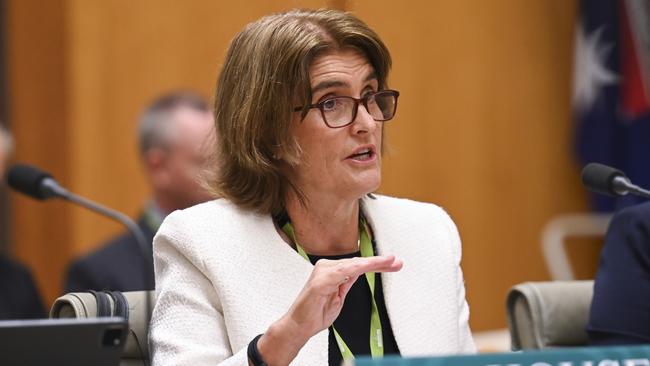Rate cuts not up for discussion at February RBA meeting
The Reserve Bank board did not consider the case for delivering mortgage relief at its February meeting, despite a growing consensus that easing inflation and a slowing economy will open the door to rate cuts later this year.

The Reserve Bank board did not consider the case for delivering mortgage relief at its February meeting, despite a growing consensus that easing inflation and a slowing economy will open the door to rate cuts later this year.
Newly released minutes reveal that a slew of soft economic data through the summer, from retail spending to jobs to inflation, has given RBA board members greater confidence that they are successfully navigating the so-called narrow path to bringing inflation under control without triggering a recession.
That progress was not assured, however, and the minutes showed the central bank retained a “hawkish” bias, warning that more rate hikes could “not be ruled out” even as it held the cash rate at 4.35 per cent for a second straight meeting.
As the RBA attempts to navigate the final stages of the path to gaining control of inflation, board members “observed that the risks around the outlook were broadly balanced”.
“There was a risk that inflation proves more persistent, but there was also a risk that consumer spending weakens more sharply than it had to date,” the minutes read. “Given these observations, it was reasonable to conclude that leaving the cash rate unchanged at this meeting, and continuing to monitor how risks to the outlook evolve, was the most appropriate course of action.
“The case to raise the cash rate further centred on the observation that it would take some time for inflation to return to target and the labour market to full employment.”
The board has explicitly considered the cases for holding and hiking at each of its meetings since April 2023.
Citi economist Faraz Syed said the RBA board remained “reluctant to entertain rate cuts”, and that this reluctance would likely extend into the next two-day meeting on March 18-19.
“This seems fair in our view, given that inflation still remains well outside the target band,” he said. “It’s clear that the board does not want to send a premature signal to the market to prepare for rate cuts. This would do little to contain inflationary expectations.” He added that he still expected cuts in August and November.
The RBA is forecasting only a gradual fall in inflation from 4.1 per cent in December to 2.8 per cent by late 2025, which would put annual consumer price growth back within the 2-3 per cent target range for the first time since March 2021.
With such a long projected runway, JP Morgan economist Ben Jarman said the case for rate hikes would be debated for “a few meetings” more.
“Risks could re-emerge and we expect the board will be reluctant to rule out future increases for a while yet,” Mr Jarman said.
“However, the RBA’s balanced approach to its labour market and inflation objectives makes further tightening seem somewhat unlikely.”
The latest board minutes highlighted the substantial margin for error in forecasting the Australian economy in the year ahead.
“Uncertainty about the outlook for the economy was high. Members also observed that the costs of inflation not returning to target within the envisaged time frame were potentially very high.
“Given this, members agreed that it was appropriate not to rule out a further increase in the cash rate target.”
Still, members also noted that “the data had evolved in a manner that gave them more confidence that inflation would return to target within a reasonable time frame while allowing employment to continue to grow”.
Ahead of December quarter wages data on Wednesday, the RBA board noted pay rate increase “remained robust” but it was likely at or near its peak of about 4 per cent. This remained consistent with getting inflation under control, provided the Covid productivity collapse reversed to “around its long-term average” – an outcome that was not assured.
“Members acknowledged that it is too soon to determine the extent to which a fading of the lingering disruptions from the pandemic and the adoption of artificial intelligence would support a turnaround in productivity growth,” the minutes noted.
The meeting was held over two days for the first time, with decisions now made every six weeks, rather than monthly.








To join the conversation, please log in. Don't have an account? Register
Join the conversation, you are commenting as Logout